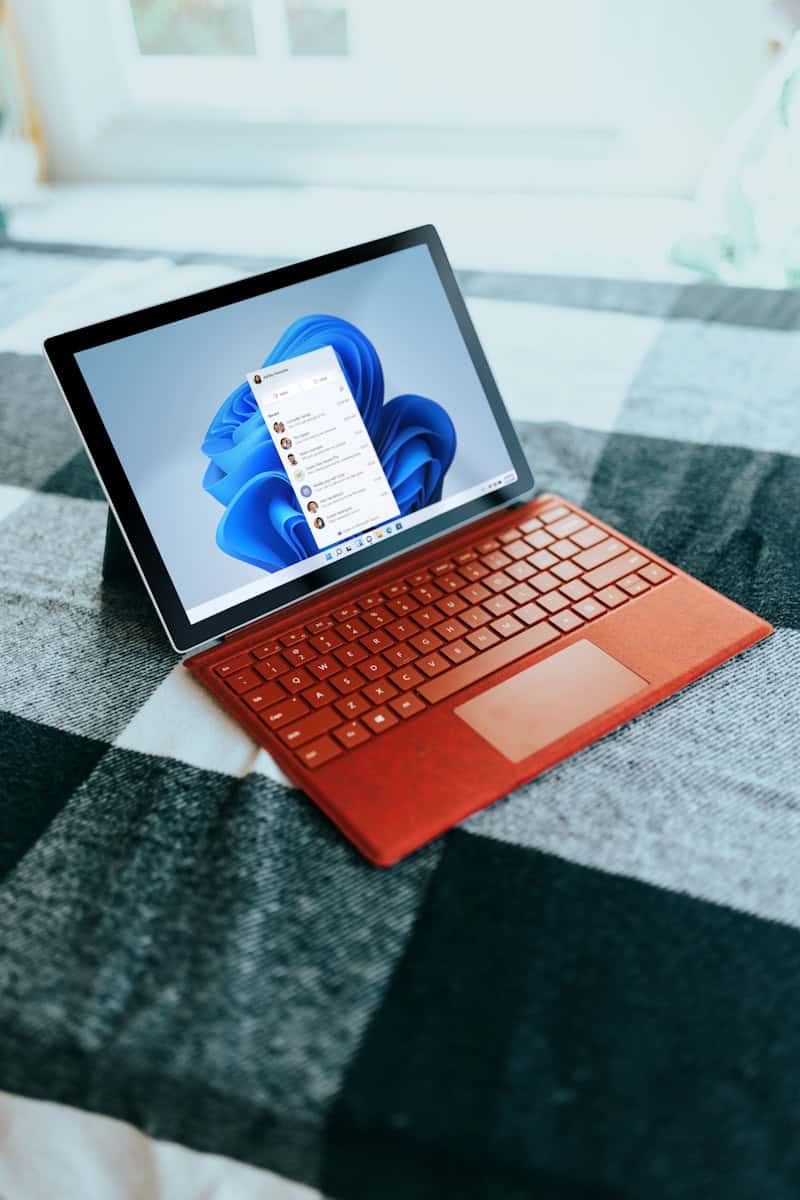Windows 11 offers several ways to put your computer to sleep quickly. Sleep mode helps save power and lets you resume work fast. You can create a Windows 11 sleep shortcut to put your PC to sleep with just one click.
Creating a sleep shortcut is easy and saves time. It’s useful when you need to step away from your computer often. You won’t have to navigate menus or press multiple keys each time.
There are different methods to make a sleep shortcut in Windows 11. You can use the Start menu, keyboard shortcuts, or create a custom desktop icon. Each option offers a quick way to enter sleep mode without fully shutting down your PC.
Windows 11 Sleep Shortcuts
Putting your computer to sleep is a great way to save energy and quickly resume your work when you return. Windows 11 offers several shortcuts to make this easy:
1. Keyboard Shortcut
- Alt + F4: This classic shortcut works in most applications and on the desktop. Make sure no window is actively selected, then press Alt + F4. A dialog box will appear with shutdown options. Use the arrow keys to select Sleep and press Enter.
2. Start Menu
- Click the Start button.
- Click the Power button.
- Select Sleep.
3. Choose what the power buttons do
- Type “power options” in the search bar and open the Power & sleep settings.
- Click “Choose what the power buttons do.”
- Under “When I press the sleep button,” select Sleep for both “On battery” and “Plugged in.” Now you can simply press the sleep button on your device (if available) to put it to sleep.
4. Create a Desktop Shortcut
- Right-click on your desktop.
- Select New > Shortcut.
- In the location box, type “rundll32.exe powrprof.dll,SetSuspendState” (without the quotes).
- Click Next.
- Give your shortcut a name like “Sleep” and click Finish.
- Now you can double-click this shortcut to put your computer to sleep.
5. Using the Command Prompt
- Open the Command Prompt.
- Type “shutdown /h” and press Enter. This will put your computer to sleep.
6. Optional: ‘Slide to Shut Down’
- Open Settings.
- Go to Accounts > Sign-in options.
- Turn on “Use my sign-in info to automatically finish setting up my device and reopen my apps after an update or restart.”
- This enables the “slide to shut down” feature on the lock screen. You can now drag the screen down to shut down, or drag it down and hold to access sleep and other power options.
| Method | Description |
|---|---|
| Alt + F4 | Classic shortcut, works in most situations |
| Start Menu | Simple and straightforward |
| Power Button | Convenient if your device has a sleep button |
| Desktop Shortcut | Quick access from your desktop |
| Command Prompt | For users comfortable with command-line interface |
| Slide to Shut Down | Easy access from the lock screen |
Experiment with these different shortcuts and find the one that works best for you.
Customizing Power Options in Windows 11
Beyond just putting your computer to sleep, Windows 11 gives you fine-grained control over your power settings. You can customize when your computer sleeps, what happens when you close the lid, and more. Here’s how to access these settings:
- Open the Start Menu and type “power options”.
- Select “Power & sleep settings”.
- Here you can adjust:
- Screen and sleep: Control how long before your screen turns off or your PC goes to sleep.
- Additional power settings: Access more advanced options, such as creating custom power plans.
By customizing your power options, you can optimize your computer for energy efficiency and personalize its behavior to match your work habits.
Key Takeaways
- Sleep mode saves power and allows quick resume of work
- Windows 11 offers multiple ways to create sleep shortcuts
- Custom sleep shortcuts save time for frequent computer breaks
Understanding Sleep Mode in Windows 11
Sleep mode in Windows 11 helps save power and lets you quickly resume work. It’s an important feature for laptop users and those who want to save energy.
The Role of Sleep and Hibernate
Sleep mode puts your PC in a low-power state. It keeps your work open but uses less energy. Your PC wakes up fast when you need it.
Hibernate saves even more power. It saves your open work to the hard drive. Then it shuts down the PC. It takes longer to wake up than sleep mode.
You can put Windows 11 to sleep in several ways:
- Click the Start button and choose Sleep
- Press Windows+X and select Sleep
- Close your laptop lid
Customizing Power Settings
Windows 11 lets you change how sleep mode works. You can set when your PC goes to sleep on its own.
To change these settings:
- Open the Settings app
- Click on System
- Select Power & battery
- Adjust the sleep timers
You can also make a sleep mode shortcut on your desktop. This gives you a quick way to put your PC to sleep.
For laptops, sleep mode helps save battery life. You can set different power plans for when you’re plugged in or on battery power.
Creating Sleep Mode Shortcuts
Windows 11 offers several ways to create sleep mode shortcuts. These methods range from simple keyboard commands to custom desktop icons. Let’s explore the most useful options for quickly putting your PC to sleep.
Using Keyboard Shortcuts
The quickest way to put your Windows 11 PC to sleep is with keyboard shortcuts. The most common method is to press Alt + F4. This opens the Shut Down Windows dialog box. Use the arrow keys to select “Sleep” and press Enter.
Another fast option is Windows + X. This opens the Power User menu. Press U then S to choose Sleep. For those who prefer a single key press a custom shortcut can be set up.
To create a custom sleep shortcut:
- Right-click on the desktop
- Select New > Shortcut
- Type: rundll32.exe powrprof.dll,SetSuspendState 0,1,0
- Name the shortcut “Sleep”
- Assign a key combination in the shortcut’s properties
Desktop and Taskbar Methods
Creating a sleep shortcut on your desktop or taskbar provides a quick visual way to put your PC to sleep. To make a desktop shortcut follow these steps:
- Right-click on an empty area of the desktop
- Choose New > Shortcut
- Enter: rundll32.exe powrprof.dll,SetSuspendState 0,1,0
- Name it “Sleep” and click Finish
To pin this shortcut to the taskbar simply drag it there. You can also use the Power Menu by right-clicking the Start button. Select “Shut down or sign out” then “Sleep”.
For faster access consider adding a sleep button to the taskbar:
- Right-click the taskbar and select Taskbar settings
- Click Taskbar corner overflow
- Toggle on the “Sleep” option
Command Line and Scripting
Advanced users can use command line tools or scripts for sleep functions. The Command Prompt offers a simple way to put the PC to sleep. Run it as administrator and type:
rundll32.exe powrprof.dll,SetSuspendState 0,1,0
PowerShell users can use this command:
Add-Type -AssemblyName System.Windows.Forms
[System.Windows.Forms.Application]::SetSuspendState('Suspend', $false, $true)
For automation AutoHotkey can be used to create custom sleep scripts. This tool allows for complex sleep behaviors based on time or system events.
Frequently Asked Questions
Windows 11 offers several ways to set up sleep mode shortcuts. These options range from using built-in keyboard commands to creating custom shortcuts. Users can easily put their computers to sleep with just a few keystrokes.
How can I enable a keyboard shortcut for sleep mode in Windows 11?
Windows 11 has a built-in shortcut for sleep mode. Press the Windows key + X. Then use the arrow keys to select “Shut down or sign out.” Press the right arrow key and select “Sleep.” This method works on both desktop and laptop computers.
What steps are needed to put my computer into sleep mode using a keyboard shortcut?
The fastest way is to use the Windows key + X shortcut. Select “Shut down or sign out” and then “Sleep.” Another option is to press Alt + F4 on the desktop. Then choose “Sleep” from the dropdown menu and hit Enter.
Is there a way to create a custom sleep mode shortcut in Windows 11?
Yes, users can make a custom sleep shortcut. Right-click on the desktop and select “New” then “Shortcut.” Type “rundll32.exe powrprof.dll,SetSuspendState 0,1,0” in the location field. Name the shortcut and click “Finish.” Now double-click the new icon to put the PC to sleep.
Can I use a keyboard shortcut for sleep mode on a laptop running Windows 11?
Laptops often have a dedicated sleep button. It usually looks like a crescent moon. If not, the Windows + X method works on laptops too. Some laptops also use Fn + F1 (or another F key) for sleep mode.
What are the default keyboard shortcuts to activate sleep mode on Windows 11?
Windows 11 doesn’t have a single-key sleep shortcut by default. The main options are:
- Windows key + X, then “Shut down or sign out” > “Sleep”
- Alt + F4 on the desktop, then select “Sleep”
- Ctrl + Alt + Delete, then click the power icon and choose “Sleep”
Are there any differences in setting up a sleep mode shortcut between Windows 10 and Windows 11?
The process for creating sleep shortcuts is mostly the same in Windows 10 and 11. Both use the same command to create a custom shortcut. The power menu (Windows + X) works the same way in both versions too. Windows 11’s design is different, but the functions are similar.







